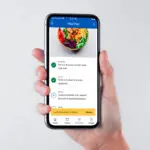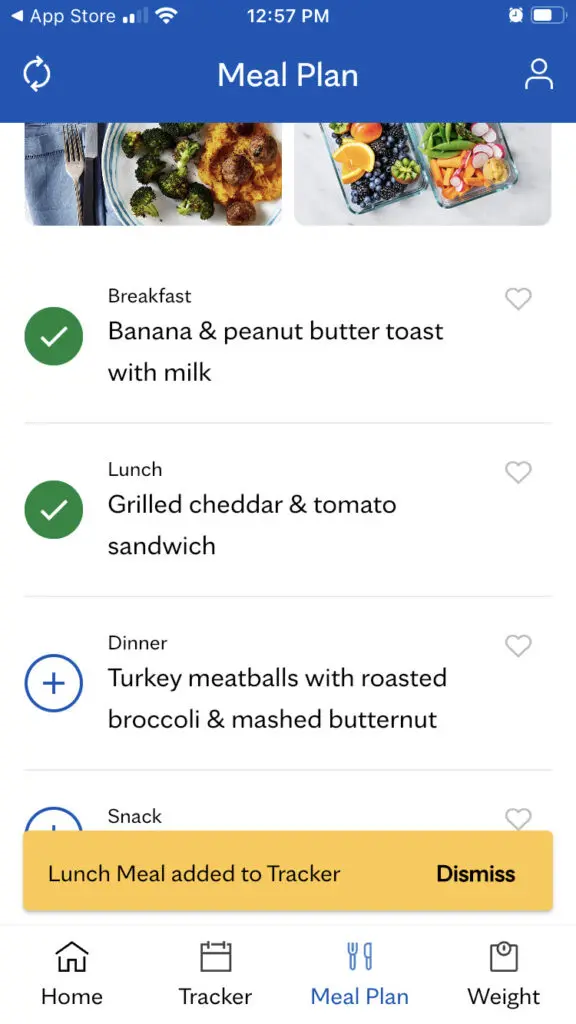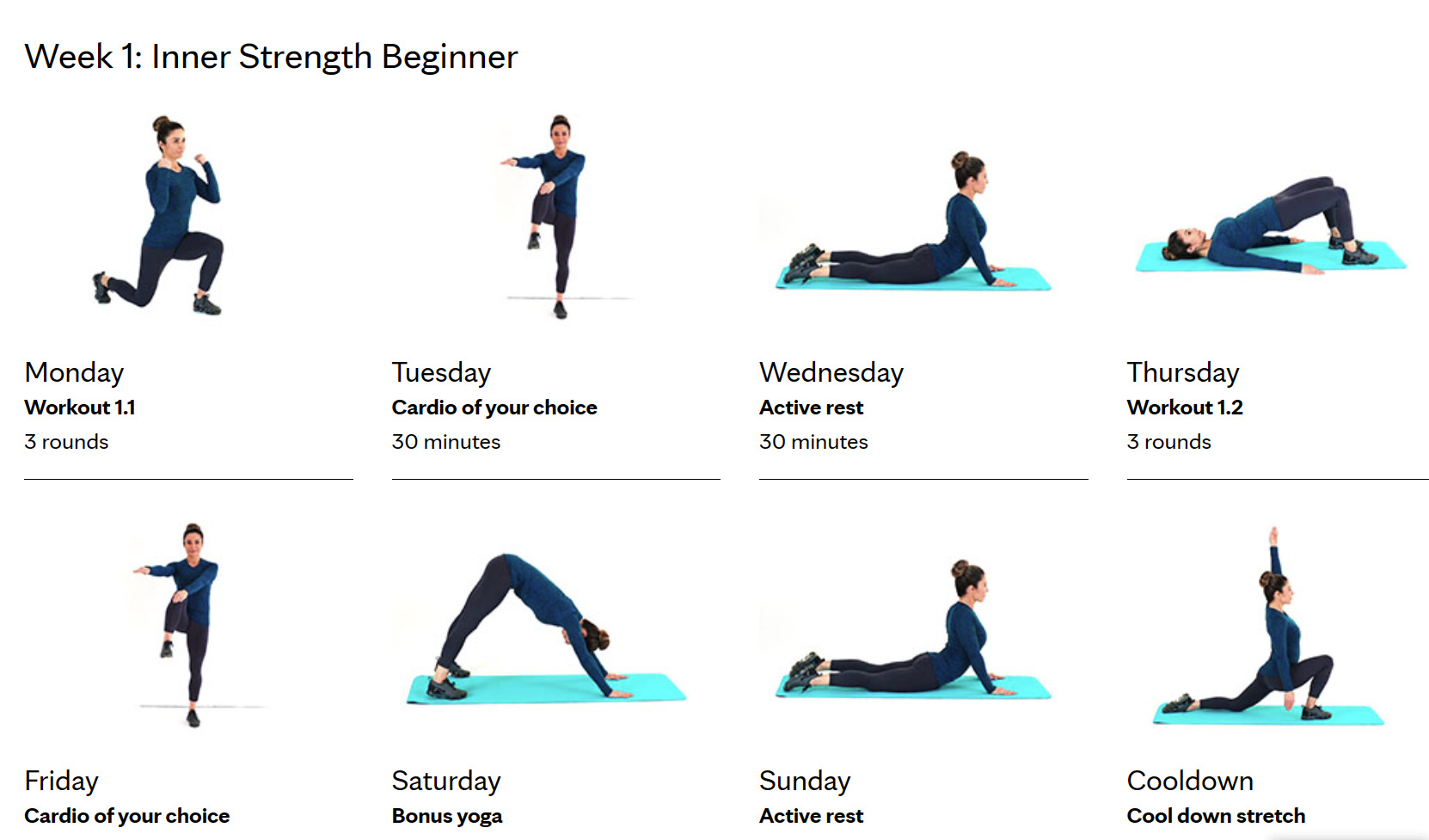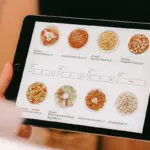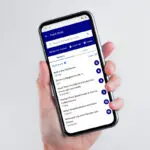Table of Contents
- We spent over 1,000 hours researching and testing the best weight loss programs and consulting with 20 health experts to compile our recommendations.
- Our testers evaluated each diet plan by subscribing as members, using the app to track food and other important metrics, testing recipes and food products, and participating in online coaching sessions.
- Registered and licensed dietitian Jillian Allen reviewed the results of our testing and research, which was fact-checked by registered and licensed dietitian Lindsey DeSoto.
- We paid close attention to specific considerations, including sustainability, food quality, value for price, and additional platform features.
- Learn more about how we tested weight loss programs.
Key takeaways
- Noom is our top choice for the best weight loss programs because of the sustainable approach it takes to weight loss, focusing on education and habit changes aimed to set up members for continued success.
- The weight loss platforms in this article cost between $17.50 and $339.99 per month.
- When choosing a weight loss plan, look for options that have educational tools, offer support from credentialed health professionals, and promote sustainable changes.
Everyone can benefit from support and resources to achieve specific goals in life, and losing weight to better your health is no different. One tool to help you achieve your health goals is a weight loss plan. Unlike diets that mainly focus on specific eating guidelines, the best weight loss programs offer comprehensive support, including meal plans, exercise instructions, and sometimes counseling, which can provide the structured support needed for effective weight management.
Of course, weight loss programs may not be right for everyone, and you should always consult with your doctor to develop a plan for losing weight that’s right for you. Our Handbook Team has researched and tested a number of programs to find out the potential benefits, and if the program is worth the hundreds of dollars, you’ll pay in annual membership fees. We also consulted with multiple registered dietitians to recommend the best weight loss programs offering accurate and effective nutritional and weight loss strategies. We’re here to provide unbiased information so you can make a knowledgeable decision for sustainable health. Here’s what we learned about the best weight loss programs of 2024.
Our picks of the best weight loss programs
- Noom: Best overall
- Simple: Best for beginners
- Mayo Clinic Diet: Best for flexibility
- Joggo: Best for runners
- Nutrisystem: Best for convenience
- DoFasting: Best for intermittent fasting beginners
- Perfect Body: Best for weight loss recipes
- Weight Watchers: Best affordable program
The best weight loss programs reviews: costs, features, pros and cons
Best overall: Noom
Why we chose Noom as best overall
We chose Noom as the best overall weight loss app because it is a comprehensive weight loss program with a focus on mindset and education that sets users up for continued success and sustainable weight loss even after the program ends.
Who should use Noom: Someone with weight loss goals who also wants to make habit changes that will carry them through the rest of their life will appreciate the educational resources included in the Noom program.
Who should not use Noom: Because this program rates the food you eat as green, yellow, or orange, users who struggle with disordered eating and restriction may consider avoiding this app.
From one of our health experts: According to Kelsey Latimer, PhD, Noom users should be aware that Noom’s separation of food into color categories (green, yellow, and orange) can lead to a negative relationship with food. Additionally, she cautions that weighing yourself everyday can impact your mental health.
Noom is a weight loss platform that includes food and health tracking, motivational lessons, coaching, and online communities to help you reach your weight goals. We liked the slower pace of this program compared to others, with a focus on learning more about your own weight loss journey rather than just setting a goal to reach a given size. The daily lessons emphasize setting realistic goals you can reach, celebrating small successes along the way, educating yourself on healthy habits, and getting more support when you need it.
In addition to the services offered with every Noom subscription, you can add the below extras. Prices of the add-ons varies depending on your personal plan:
- Personal behavior coaching and 1:1 weekly sessions.
- Custom meal plan.
- Custom workout plan.
- Body composition scale.
Noom coaches aren’t credentialed health professionals, so they can provide motivational support but not medical or nutrition advice. We had a hard time getting timely responses from both customer service and the coaches, and multiple testers found that the customer service chat wasn’t able to answer questions.
Nevertheless, we like that this program has a greater focus on mental health as an important part of weight loss than other programs we tested. Some of the lessons seemed elementary, but we enjoyed the upbeat tone and positivity.
Read our in-depth Noom review to learn more.
Best for beginners: Simple
Why we chose Simple as best for beginners
We chose Simple as best for beginners because it is a user-friendly, app-based weight loss program focused on one new habit: adopting intermittent fasting. At the same time, users who want to make further changes or learn more about healthy living, can track their meals or upload a picture of their meals to get feedback on improving their nutrition habits. We think the educational content included with this app is easy to digest, making it a good starting point for anyone who wants to lose weight or simply embrace healthier habits.
Who should use Simple: Simple is a good fit for anyone who is interested in the health benefits of intermittent fasting.
Who should not use Simple: Because Simple is based around fasting, the free version of this app doesn’t provide enough nutrition education for someone looking to make a holistic lifestyle change.
Simple is an intermittent fasting app that allows users to choose a fasting window. As part of the app-based program, you will receive notifications reminding you when your fasting window begins and ends. The free version of this app also includes tracking of water and calorie intake. Users who upgrade to the premium membership with Simple will have access to their food scanner with AI-powered nutrition feedback. This feedback is given in the form of a nutrition score and includes feedback on what could be improved about your meal. There is also an option to select “get alternatives” and receive specific ideas for more nutritious meals that match your individual preferences.
Learn more about intermittent fasting in our roundup of the best intermittent fasting apps.
Best for flexibility: Mayo Clinic Diet
Why we chose the Mayo Clinic Diet as best for flexibility
We chose the Mayo Clinic Diet because it was developed by a team of doctors, dietitians, and psychologists as a way to teach people healthy habits with a 12-week program, enabling them to lose weight and keep it off for the long run. Clinical studies have found that this length of time is reasonable for participants to see changes in body weight and composition.
Who should use Mayo Clinic Diet: Since the Mayo Clinic Diet is developed by medical professionals, it is a good choice for someone with specific dietary needs who desires to lose weight.
Who should not use Mayo Clinic Diet: As part of their Quick Start feature, Mayo Clinic Diet markets the possibility of six to 10 pounds of weight loss in two weeks, which is faster weight loss than is generally considered healthy. This may be triggering for individuals who have previously struggled with yo-yo dieting or extreme, restrictive diets.
The program offers six meal plans that you can choose from based on your food preferences and health needs, including a low-carb plan and three gluten-free options. This is a huge plus for many people: Our survey of 600 weight loss program users found that 57 percent wanted a program to help them with meal planning.
From one of our health experts:
According to Keith Ayoob, pediatric nutritionist and clinical practitioner at Albert Einstein College of Medicine, the recipes provided by the Mayo Clinic Diet are realistic and can appeal to many tastes, but they also encourage experimentation. This is very important if you’ll be on a diet for an extended length of time.
We recommend the Mayo Clinic Diet as a great weight loss option for anyone wanting to lose weight. It’s a particularly good choice for those who may want or need the flexibility of following a specific diet, such as gluten-free or vegan, but offers a wide range of solid benefits for everyone.
Read our in-depth Mayo Clinic Diet review to learn more.
Best for runners: Joggo
Why we chose Joggo as best for runners
We chose Joggo as the best for runners because even though this app is primarily geared toward runners rather than people looking to lose weight, it offers a number of features that can be helpful for weight loss. For example, Joggo users receive a customized meal plan and educational resources focused on lifestyle changes that support the user in their goals. It’s also one of the most affordable programs on the market.
Who should use Joggo: New or seasoned runners who have already visited with a health care provider about making changes to their physical activity by adding or increasing running to their daily routine.
Who should not use Joggo: Brand new runners or individuals prone to injury shouldn’t use Joggo to start running for the first time if they haven’t visited with a healthcare professional about this lifestyle change first.
While Joggo uses a detailed questionnaire as part of its onboarding process, we would like to see Jogoo make changes to how it responds to medical questions. We found it concerning that, even when we answered questions indicating we were a user with a chronic condition like asthma, a heart condition, or diabetes, the app didn’t flag these responses. Instead, Joggo still declared running safe at the end of the questionnaire. Individuals with chronic health conditions should always visit with a health care provider before making big changes in their physical activity.
To learn more about this weight loss program, read our Joggo review.
Best program for convenience: Nutrisystem
Why we chose Nutrisystem as best for convenience
We chose Nutrisystem as the best for convenience because this weight loss program has multiple prepared meal delivery options available. We appreciate that Nutrisystem is built with busy people in mind, cutting out the time spent planning, shopping, and cooking with pre-portioned meals that can be reheated in the microwave.
Who should use Nutrisystem: Nutrisystem is a good fit for someone who wants to lose weight but doesn’t have much time in their schedule for shopping and meal prep.
Who should not use Nutrisystem: Because this is a prepared meal delivery service, it is the highest priced on this list, and won’t be a good fit for someone operating on a strict budget.
Nutrisystem has been around since 1975 when it introduced one of the first calorie-controlled meal delivery programs. It still works the same way, with meals, snacks, and shakes delivered to your door. One thing that has changed since Nutrisystem’s founding is the introduction of its app, Numi. Our testers used the app to track the meals they tried and explored recipes when they wanted to cook instead. The app, website, and meal packages provide detailed nutrition information, and it is relatively easy to choose meals and snacks that are suited to specific lifestyle needs such as diabetes. It is worth noting that choices for Celiac or gluten sensitivity are limited.
Our testers say that some of the meals they have tried so far lacked flavor. For example, the breakfast sandwiches were bland and easy to replicate with groceries one of our testers already had on hand (and their version tasted better). When it came time for lunch, microwaving the packaged hamburger resulted in a soggy bun and chewy patty with very little flavor. Overall, the boring nature of the meals combined with small, low-calorie portions left our testers unsatisfied and wanting more.
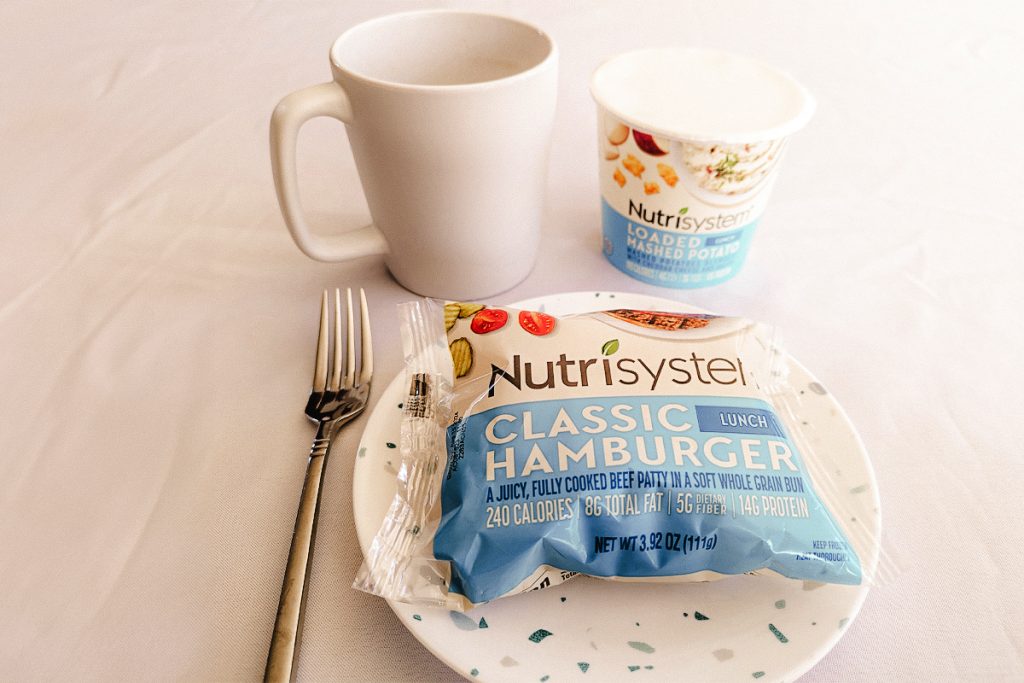
Nutrisystem is a full-service weight loss program with a price tag to match. However, when we looked at Nutrisystem with our standard of slow and sustainable weight loss in mind, the program didn’t pass the test. The extremely small portions left our tester hungry. While convenient, prepackaged meals don’t teach individuals much about preparing balanced meals once they leave the program. Additionally, promises of rapid weight loss concern us about how healthy this program really is for its users.
Learn more in our Nutrisystem review.
Best for intermittent fasting beginners: DoFasting
Why we chose DoFasting as best for intermittent fasting beginners
We chose DoFasting as best for intermittent fasting beginners because this weight loss app guides you in following an intermittent fasting schedule. Intermittent fasting is a system of eating during a set window of time each 24-hour period and fasting for the rest of the time. Intermittent fasting has been shown to support weight loss and lower blood lipid levels and blood pressure. DoFasting allows you to set a timer for fasting and eating, track food intake, and track weight.
Who should use DoFasting: Someone who wants to try intermittent fasting for the first time will appreciate the extra guidance DoFasting provides.
Who should not use DoFasting: We feel the longer fasting windows should be avoided by anyone who hasn’t consulted with a dietitian first.
The program offers fasting schedules that range between 12 and 72 hours. Our testers found that fasting for 12 hours was easy, as most of the fast happened at night while they slept. But the 16- and 18-hour fast was much harder to stick with due to blood sugar drops that caused mood swings and uncomfortable hunger pangs. All of the testers opted out of trying the 20-hour fast.
Learn more in our DoFasting review.
Best for Weight Loss Recipes: Perfect Body
Why we chose Perfect Body as best for weight loss recipes
We chose Perfect Body as best for weight loss recipes because it provides personalized 28-day meal plans with simple recipes that taste good. Each plan is developed by a nutritionist and customized to your weight loss goals and dietary preferences based on your answers to their online questionnaire. The program is entirely digital, and every meal plan includes balanced recipes that you’ll make yourself.
Who should use Perfect Body: Someone who wants to learn to cook healthy meals will appreciate the many different recipes available in the Perfect Body program.
Who should not use Perfect Body: Someone operating on a limited budget will find the cost of groceries associated with this diet plan isn’t affordable because Perfect Body includes such a wide variety of recipes each week, requiring you to buy a number of unique ingredients with little overlap between meals.
The 28-day plan includes five recipes per day, including two snacks, with step-by-step instructions, plus calorie and macronutrient information. The app lets you swap a meal for a variety of alternate recipe options if something doesn’t seem appealing, and you can also skip meals entirely. While the app works well if you’re following the recipe plan, there is no option for adding outside recipes and meals. We think that makes the Perfect Body plan unsustainable as a long-term option because it doesn’t teach users how to make healthy decisions when they’re dining out.

Overall, we found the recipes diverse and generally tasty. We enjoyed the varied recipes, which encouraged trying new flavor combinations. Still, we would have preferred the recipes to be organized in a way that limited the number of ingredients purchased per week. We were unimpressed with some of the recipes’ seasoning recommendations, as they were often limited to salt and pepper, making some meals quite bland.
Best affordable program: Weight Watchers
Why we chose Weight Watchers as best affordable program
We chose Weight Watchers as the best affordable program for weight loss because we feel the simplified food tracking system combined with the support groups and workshops are a good value at the price of $23 per month for someone looking to lose weight.
Who should use Weight Watchers: Because WW takes an approach to weight loss that doesn’t require exercise, it is a good fit for someone who is too busy to comply with a more comprehensive weight loss plan.
Who should not use Weight Watchers: We found the approach to weight loss doesn’t promote lifestyle changes, so this program isn’t a good fit for someone who wants to make long term changes like increasing physical activity or learning to cook balanced meals.
WeightWatchers is a weight loss program based on a simplified food tracking system and support offered through coaching and member groups. However, it doesn’t provide much in the way of nutrition education or tips for maintaining healthy eating habits once you end your membership.
From one of our health experts:
According to Chrissy Arsenault, registered dietitian, the points systems provided by WW can be helpful for some, but it can also be complex and time-consuming to track every food item. This complexity may deter some individuals.
Read our WeightWatchers review to learn more.
How we test and choose the best weight loss programs
A nutritious diet, characterized by eating a variety of foods, including plenty of fruits, vegetables, and whole grains, along with lean protein, is linked to improved overall physical and mental health. The health benefits of a healthy diet include decreased risk of diabetes and heart disease and greater longevity, according to the World Health Organization. Similarly, WHO states that regular physical activity is associated with improved mental health along with the prevention of cancer, heart disease, and diabetes.




Our weight loss program testing experience
Our Handbook Team members subscribed to nine top weight loss programs as mystery shoppers. During that time, we did the following:
By becoming familiar with the websites and apps of each program and using them as a normal customer would, we were able to gain a detailed view of how easy (or hard) it was to follow the program in daily life.
Participating in online member communities and coaching sessions gave us insight into the type of support each program offered. And our focus groups and interviews with doctors, dietitians, nutritionists, and mental health experts helped us learn more about the connections between weight loss, physical health, and mental health.
One detail we focused on was the sustainability of each program. It’s vital that a successful weight loss program teaches you how to establish and maintain healthy habits for long-term weight loss, and not all companies are standouts at this skill.
From our tester
“There was a pattern in our research of people joining and losing weight, falling back into old patterns, regaining weight and coming back full circle.”
Our testing results, experiences of other customers compiled from interviews and surveys, and professional opinions of health experts have all informed the conclusions we’ve arrived at and share in this review of the best weight loss programs.
Learn more about our healthy living review methodology.
What to consider when choosing a weight loss program
Healthy living, including a balanced diet and regular exercise, is directly related to mental health and overall wellness. A nutritious diet supports strong bones and muscles, combats depression, and lowers the risk of chronic illnesses like heart disease and diabetes, while regular physical activity can alleviate anxiety and depression and improve sleep.
In some situations, weight loss programs can help you learn more about how nutrition can support your overall health. However, we understand that weight loss is a sensitive topic. Research shows feelings of shame, self-criticism, and social comparison can hinder weight management and eating habits. Some weight loss programs can even intensify these feelings.
If you’re affected by an eating disorder or experience patterns of disordered eating, we suggest talking to a dietitian, therapist, or counselor who specializes in eating disorders before you enroll in any weight loss program.
It’s also important to consider that weight loss programs vary from one to the next, with different tools, support, and methodologies. Choosing the right weight loss program for your needs means finding one that suits your lifestyle, budget, personality, and personal history with food and exercise.
The relationship between weight loss and mental health is often overlooked. For some, weight loss can bring positive experiences of confidence and accomplishment. For others, weight loss can lead to feelings of anxiety, despair, and hopelessness. It is important to consider how your mental health can be affected as you embark on a weight loss journey.
Karin Evans, registered dietitian nutritionist at Top Nutrition Coaching
Our Handbook Team is here to offer guidance and help you find weight loss platforms that are positive, fun to use, and supportive of healthy and steady weight loss of 1 to 2 pounds per week. When choosing your weight loss program, keep these factors in mind:
Your relationship with food
If you’re affected by an eating disorder or experience patterns of disordered eating, speak with a dietitian, therapist, or counselor who specializes in eating disorders before you enroll in any weight loss program. Those who experience feelings of guilt or shame associated with eating should choose a program that encourages a healthy relationship with food, frequent meals rather than periods of fasting, flexible food choices, and a limited focus on calorie counting.
It’s also important to prioritize a program that provides ongoing coaching for added encouragement and support. “An effective weight loss program should ideally offer behavioral support and coaching to address the emotional and psychological aspects of eating. Look for programs that provide guidance on portion control, mindful eating, and strategies to cope with emotional triggers for overeating,” says Chrissy Arsenault, a registered dietitian at Trainer Academy.
Your knowledge base
Are you familiar with nutrition, exercise, and weight loss strategies? Or do you consider yourself a beginner when it comes to weight loss? Some programs, such as the Mayo Clinic Diet, offer more education and support, making all the difference if you’re new to weight loss.
Eating habits promoted by the program
A quality weight loss program will help you establish healthy eating habits to support you for the rest of your life. Beware of any system that teaches severe food restriction, labels foods as “good” or “bad,” or doesn’t provide a well-rounded variety of foods in your meal plan.
“Be wary of any programs that promise rapid, unsustainable weight loss or severely restrict entire food groups or certain foods,” says Arensault. “The nutrition plan should promote a focus on nutrient density and incorporate a balanced intake of carbohydrates, proteins, and fats, along with essential vitamins and minerals.
How much do weight loss programs cost?
The cost of weight loss programs varies widely based on the level of support offered, the credentials of the health professionals offering that support, and whether food is provided with the program. For instance, one of the least expensive programs is Joggo with an average price of $12 per month. It’s basically an automated system with little in the way of help from real people or health experts, but if you’re comfortable with a do-it-yourself plan, this is one way to save money.
At the other end of the spectrum is Nutrisystem, a weight loss program that can run up to nearly $400 per month but delivers every meal and snack to your door.
The length of membership you commit to also makes a big difference in the monthly cost for some programs. For instance, Noom charges $70 per month if you sign up for only one month, but $17.50 per month if you subscribe and pay for 12 months at a time.
How to use a weight loss program sustainably
An extreme diet, requiring very low calorie consumption, removing entire food groups, and participating in several hours of physical activity each week may result in quick weight loss, but it is rarely sustainable. The best diet promotes making realistic lifestyle changes that result in slow, but steady weight loss. In order to be sustainable, it should be possible to maintain weight loss after the program is ended.
What is the difference between a diet and a weight loss program?
Weight loss programs and diets have several differences. Diets typically focus on following specific nutritional guidelines, such as the ketogenic diet’s high-fat, low-carb food plan, or the Mediterranean diet’s emphasis on fruits, vegetables, and healthy fats. In contrast, weight loss programs often offer a more comprehensive package, including meal plans, exercise routines, and support from professionals or a community. People may choose a weight loss program over a simple diet because they provide structured plans, motivational support, and accountability, which can be crucial for long-term success.
Popular diets for weight loss
- Keto Diet: Following this high-fat, low-carb diet encourages the body to enter a metabolic state known as ketosis. Because the body burns more fat instead of carbohydrates, the keto diet can cause weight loss.
- Flexitarian Diet: Flexitarians are flexible vegetarians who focus on increasing their intake of vegetables, fruits, and whole grains while decreasing their meat consumption. For some people, reducing their meat intake may also lower their calorie intake, resulting in weight loss.
- Mediterranean Diet: The Mediterranean diet encourages eating more vegetables, healthy fats, and whole grains. It also recommends sticking to lean meats and fish, eliminating red meat, and reducing dairy intake.
- Volumetrics: Individuals who want to eat more food while dieting may turn to a volumetrics diet. On this diet, people lose weight without feeling too hungry by eating a large amount of low-calorie foods.
- DASH Diet: This diet is focused on improving overall health by reducing sodium and saturated fat intake. People following the DASH diet are also encouraged to eat a variety of healthy foods including vegetables, fruit, whole grains, and lean meats.
Our final verdict
Our overall pick for the best weight loss program is Noom, because they are committed to providing a weight loss program with a strong focus on education and long-lasting habit changes that result in sustainable weight. Compared to many of the weight loss programs we reviewed, Noom is a comprehensive program, guiding users through making small changes they can maintain, such as increasing their physical activity and swapping out foods for more nutritious options. We feel that Noom is the best diet because it explains why users are encouraged to do certain things, instead of just telling them to eat this or do that, setting each person up for continued success after the program ends.
While Noom is not the lowest cost program on this list, we still feel it is affordable based on what is offered. Noom costs between $17.50 and $70 a month and often improves affordability by offering free trials and discounts to new users.
Compare the best weight loss programs of 2024
| Starting monthly cost | $17.50 | $17.99 | $19.99 | $33 | $339.99 | $38 | $39 | $23 |
| Services | App-based program; Food and activity tracking; Recipes; Coaching | App-based program, educational content, weekly meal plans | App and website; 6 meal plans; Recipes and shopping lists; At-home workouts | Weekly meal plans; Customized training regimens | Website and app; Meal delivery; Weight loss program | Website and app; Food and activity tracking; Workout routines; Weekly health report | App-based program, 24/7 coaching, tracking tools | WW app and website; Online community; 24/7 coaching; Educational content and recipes |
| Key points | Program length: 1–12 months; Focus on mental health | Program length: 1, 3, 6, and 9-month plans; AI health coach; Menu scanner; Nutrition scores | Program length: 3 months; No calorie counting; Focus on education | Program length: 2, 4, or 6 months; App does list the calories you eat and burn | Program length: Monthly; 130+ menu options; Plans start at $11.08/day | Program length: 1, 3 and 6 months; Meal recommendations; Fasting timer; Water tracker | Program length: 1, 3, and 6-month plans, personalized meal plans | Program length: 3 to 10 months; 3 different plan options |
*These prices often vary based on location and promotions.
Frequently asked questions
The surest and safest way to lose weight is to combine a healthy diet that includes a variety of whole foods with a program of regular exercise. Between the calories you take in with your diet and those you burn through exercise and daily activity, you’ll need to be in a calorie deficit to see weight loss, according to the Mayo Clinic. This means that you eat fewer calories than your body is burning each day. Adequate protein and fiber intake are also important to help ward off hunger between meals; a dietitian can help you find the right protein level for your body.
The United States Department of Agriculture recommends a weight loss rate of no more than 1–2 pounds per week.
Promises of more than 2 pounds per week of weight loss, a requirement to eat only foods provided by the program, and shaming of food choices or body weight in any way are all things to avoid when shopping for weight loss programs.
Bringing your weight into a healthy range helps both your body and mind. The physical benefits include minimizing your risk for diabetes, cardiovascular disease, certain cancers, high blood pressure, stroke, and sleep apnea, among other conditions. Even small weight loss, just 5 percent of your body weight, can result in marked improvements in health measures like blood glucose, triglycerides, and inflammation. These are all risk factors for the health conditions listed above, so lowering levels by losing weight also lowers your risk of the chronic diseases associated with obesity. In addition to physical health, research shows that weight loss offers a number of benefits for mental and emotional health.
Sustainable weight loss can be achieved by setting realistic goals that focus on creating healthy habits and making lasting lifestyle changes. To use a weight loss program safely and sustainably, create a plan you can commit to for the long term and reach out to medical professionals, friends, and family for additional support.
- Centers for Disease Control and Prevention. (2022, May 17). Adult obesity facts. Link
- Sarwer, D. B., & Polonsky, H. M. (2016). The psychosocial burden of obesity. Endocrinology and Metabolism Clinics of North America, 45(3), 677–688. Link
- Ramìrez-Velez, R., Izquierdo, M., Kastro-Astrudillo, K., Medrano-Mena, C., Monroy-Dìaz, A.L., Castellanos-Vega, R., et al. Weight loss after 12 weeks of exercise and.or nutritional guidance is not obligatory for induced changes in local fat/lean mass indexes in adults with excess of adiposity. Nutrients. 12(8), 2231. Link
- Standard American diet. NutritionFacts.org. (n.d.). Link
- Mayo Clinic. Eating disorders. Link
- Fiorentino, T.V. (2022) Intermittent fasting and metabolic health. Nutrients. 14(3), 631. Link
- Centers for Disease Control and Prevention. Health effects of overweight and obesity. Link
- Magkos F., Fraterrigo G., Yoshino J., Luecking C., Kirbach K., Kelly S.C., et al. (2016) Effects of moderate and progressive subsequent weight loss on metabolic function and adipose tissue in humans with obesity. Cell Metabolism. 23(4), 591-601. Link
- Lasikiewicz L., Myrissa K., Hayland A, & Lawton C.L. (2014). Psychological benefits of weight loss following behavioural and/or dietary weight loss interventions. A systematic research review. 72, 123-137. Link
- Mayo Clinic. Healthy Lifestyle Weight Loss. Link
- United States Department of Agriculture. Interested in losing weight? Link
- World Health Organization: WHO. (2019, October 11). Nutrition. Link
- World Health Organization: WHO. (2024, June 26). Physical activity. Link











